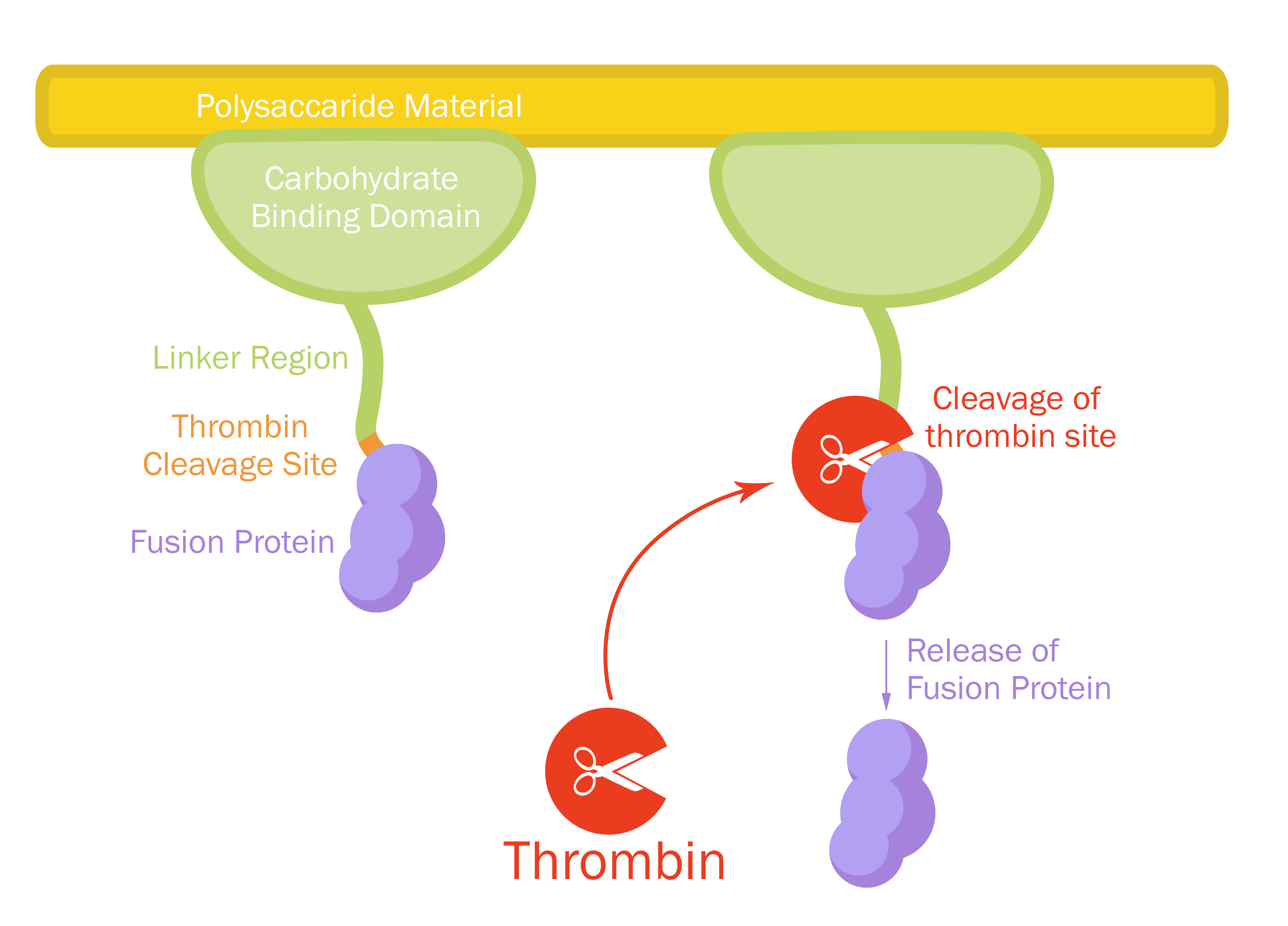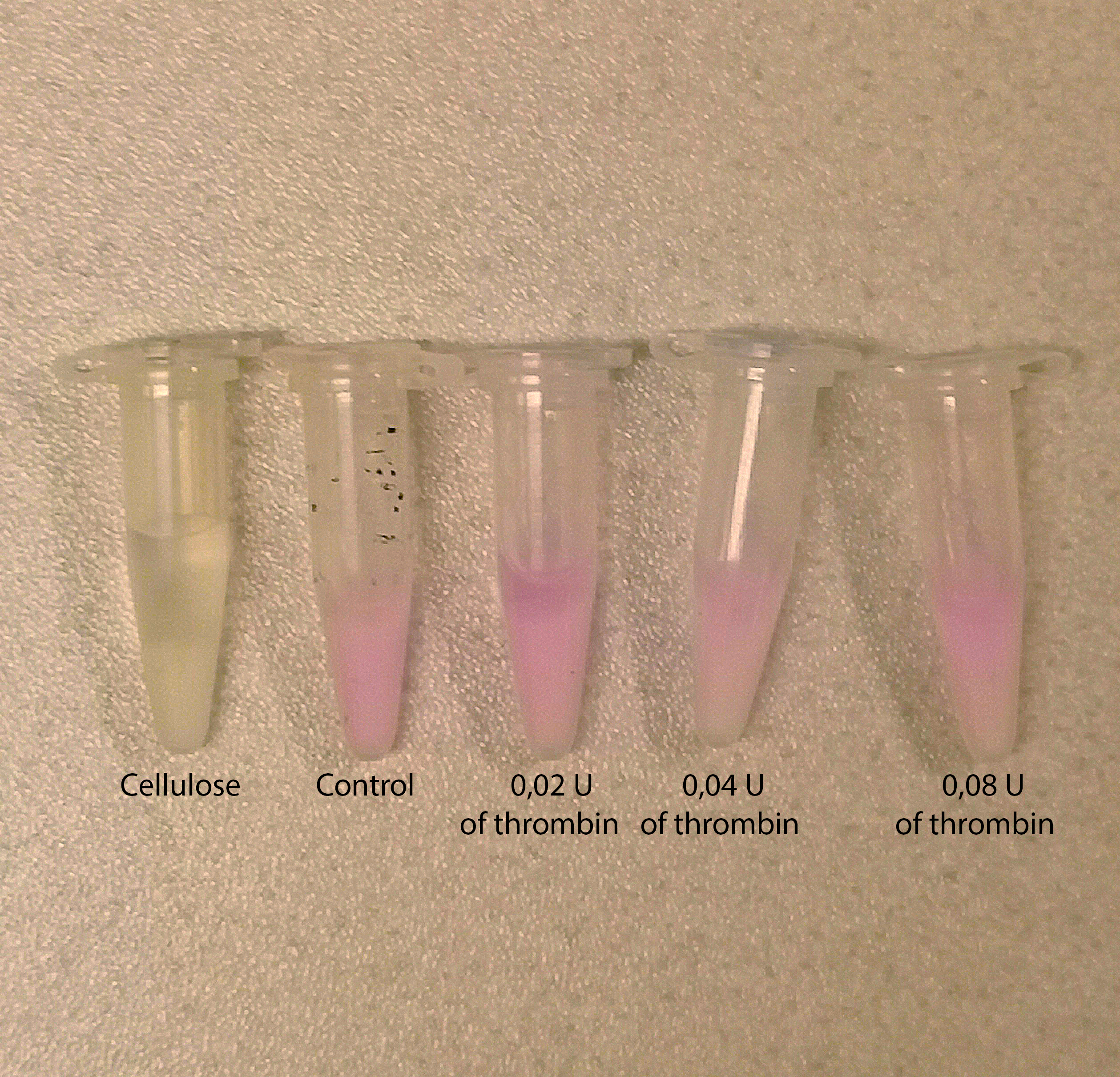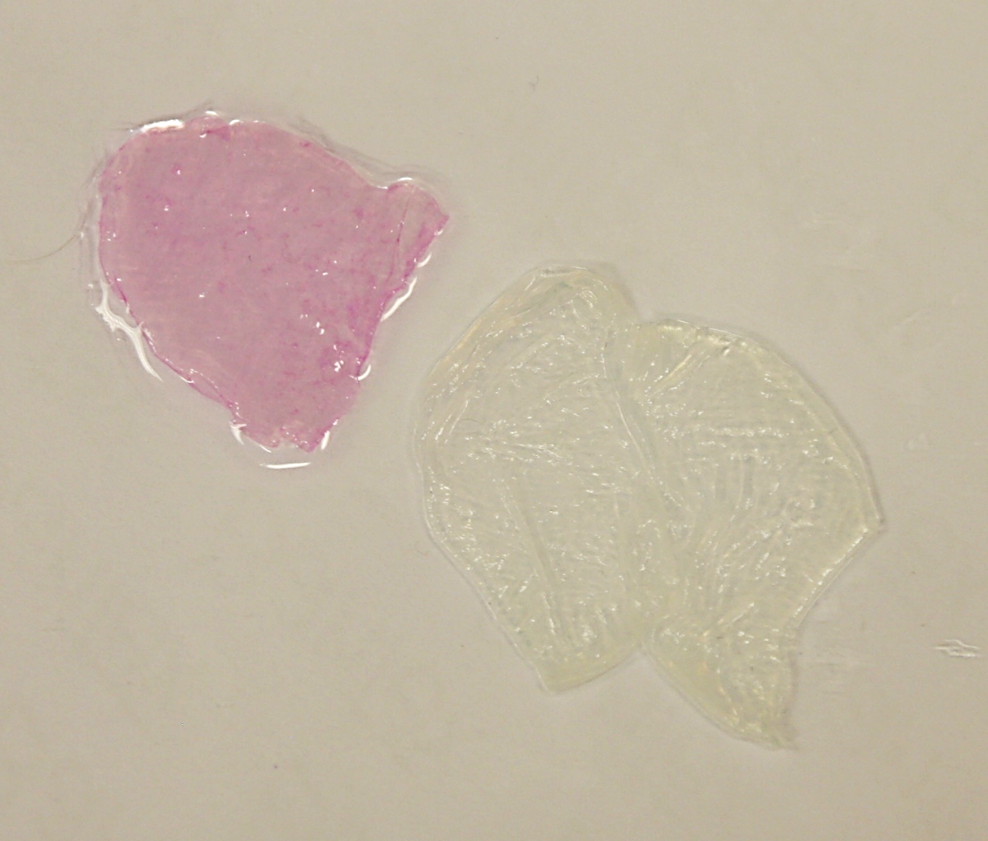Difference between revisions of "Part:BBa K3182000"
| Line 11: | Line 11: | ||
<partinfo>BBa_K3182000 short</partinfo> | <partinfo>BBa_K3182000 short</partinfo> | ||
[[File:T--Linkoping_Sweden--fusionproteinillustration.jpg|420px|thumb|right|<b>Figure 1.</b> Mechanism of action. The CBDcipA-fusion is attached to cellulose. By adding thrombin from any source the fusion protein will be cleaved and the C-terminal fusion protein will be released into the solution. By changing the fusion protein to an antimicrobial peptide/enzyme, and using the cellulose as a bandage, the peptide/enzyme can be released into a wound by native human thrombin.]] | [[File:T--Linkoping_Sweden--fusionproteinillustration.jpg|420px|thumb|right|<b>Figure 1.</b> Mechanism of action. The CBDcipA-fusion is attached to cellulose. By adding thrombin from any source the fusion protein will be cleaved and the C-terminal fusion protein will be released into the solution. By changing the fusion protein to an antimicrobial peptide/enzyme, and using the cellulose as a bandage, the peptide/enzyme can be released into a wound by native human thrombin.]] | ||
| − | This part consists of a cellulose binding domain (CBD) from Clostridium thermocellum cellulose scaffolding protein (CipA) and is a central part Clostridium thermocellum's cellusome. The CBD-fusion were fused using a flexible GS-linker (-GGGGSGGGGS-). A thrombin cleavage site (-LVPRGS-) was added to the end of the linker and its breakage will leave a glycine and serine attached to the N-terminal of the fusion protein. | + | |
| + | |||
| + | This part consists of a cellulose binding domain (CBD) from Clostridium thermocellum cellulose scaffolding protein (CipA) and is a central part Clostridium thermocellum's cellusome. The CBD-fusion were fused using a flexible GS-linker (-GGGGSGGGGS-). A thrombin cleavage site (-LVPRGS-) was added to the end of the linker and its breakage will leave a glycine and serine attached to the N-terminal of the fusion protein. The linker is fused to AsPink (a.k.a. asCP or asFP595) which is a chromoprotein from Anemonia sulcata, a coral. | ||
An internal BamHI recognition sequence (RS) has been added to enable changeable fusion proteins. BamHI was chosen because its RS codes for glycine and serine, fitting it to the end of the thrombin site. It is also cost-effective enzyme and is unaffected by methylated DNA. | An internal BamHI recognition sequence (RS) has been added to enable changeable fusion proteins. BamHI was chosen because its RS codes for glycine and serine, fitting it to the end of the thrombin site. It is also cost-effective enzyme and is unaffected by methylated DNA. | ||
Revision as of 17:46, 25 August 2019
Contents
Sequence and Features
- 10COMPATIBLE WITH RFC[10]
- 12COMPATIBLE WITH RFC[12]
- 21INCOMPATIBLE WITH RFC[21]Illegal BamHI site found at 580
- 23COMPATIBLE WITH RFC[23]
- 25COMPATIBLE WITH RFC[25]
- 1000COMPATIBLE WITH RFC[1000]
Introduction
pT7-CBDcipA-AsPink

This part consists of a cellulose binding domain (CBD) from Clostridium thermocellum cellulose scaffolding protein (CipA) and is a central part Clostridium thermocellum's cellusome. The CBD-fusion were fused using a flexible GS-linker (-GGGGSGGGGS-). A thrombin cleavage site (-LVPRGS-) was added to the end of the linker and its breakage will leave a glycine and serine attached to the N-terminal of the fusion protein. The linker is fused to AsPink (a.k.a. asCP or asFP595) which is a chromoprotein from Anemonia sulcata, a coral.
An internal BamHI recognition sequence (RS) has been added to enable changeable fusion proteins. BamHI was chosen because its RS codes for glycine and serine, fitting it to the end of the thrombin site. It is also cost-effective enzyme and is unaffected by methylated DNA.
This part uses an expression system with a T7 promotor (BBa_I719005) as well as a 5'-UTR (BBa_K1758100) region which has been shown to further increase expression in E. coli (BBa_K1758106), ([http://www.ncbi.nlm.nih.gov/pubmed/2676996 Olins et al. 1989]), ([http://www.ncbi.nlm.nih.gov/pubmed/23927491 Takahashi et al. 2013]).
CBDcipA and sfGFP 3D structure
Expression system
The part has a very strong expression with a T7-RNA-polymerase promotor (BBa_I719005) as well as a 5'-UTR (BBa_K1758100) region which has been shown to further increase expression in E. coli (BBa_K1758106), ([http://www.ncbi.nlm.nih.gov/pubmed/2676996 Olins et al. 1989]), ([http://www.ncbi.nlm.nih.gov/pubmed/23927491 Takahashi et al. 2013]). Both this part and the part were sfGFP was changed for AsPink (BBa_K3182000) showed great expression.

Usage and Biology

Thrombin Cleavage
In figure 10 bacterial lysate of sonicated E. coli BL21 was incubated with cellulose (Whatman CF-11 Fibrous Medium Cellulose Powder) in 1h on an end-to-end rotator at R.T. The cellulose was saturated with AsPink lysate. The samples were afterwards centriuged at 3000 g in 1 min and the supernatant was removed. In all samples cleavage buffer (20 mM Tris-HCl pH 8.4, 150 mM NaCl and 2.5 mM CaCl₂) was added and three different dilutions of thrombin (Novagen, #69671) was added. The dilutions were 0,02, 9,94 and 0,08 units (U). One unit refers to the amount of thrombin needed to cleave 1 mg of protein for 16h at R.T in a 200 µl reaction containing the cleavage buffer. The samples were put on an end-to-end rotator over-night (ca 16h) and left at R.T. The control with only cleavage buffer has a transparent supernatant and a pink pellet of cellulose, the most diluted (0,02 U) has a slightly pinker supernatant and less pink pellet however the 0,04 U and 0,08 U dilutions has a pinker supernatant and paler pellet with 0,08 U dilution being the sample with most cleaved AsPink due to the more intense supernatant.







